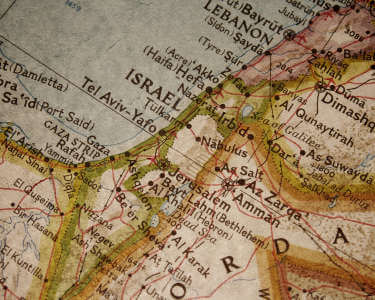
Twice in Romans 11 Paul says that Israel has not fallen and is still the apple of God’s eye. In the New Testament, the word Israel is used 77 times. Clearly, in 71 of those references it speaks of the nation of Israel, which is 96 percent of the time. It does not refer to the church.
Has God cast away Israel? Absolutely not! The fact is, when something is “cast away,” you never hear of it again. Yet in the book of Revelation, 12 tribes of Israel, and 12,000 out of each of the 12 tribes, are sealed to present the gospel during the Great Tribulation (Rev. 7:4).
Let me remind you that during the tribulation the gentile church is in heaven. The 144,000 who will be sealed to present the gospel to the world will be 144,000 Jewish people who have a supernatural revelation of the identity of Jesus Christ as Messiah, similar to Paul’s revelation on the road to Damascus.
The point here is that a nation called Israel is alive and well during the tribulation. They will be part of the first matter of business when Christ returns to earth-the judgment of the nations. And the basis for this judgment is to be how the nations of the world treated the Jewish people and the nation of Israel. (See Matt. 25: 31-46.)
The point is simply this: if God has cast away Israel, why do they still exist in the book of Revelation? Why does God have a judgment of nations to judge all nations and men for the way in which they treated the Jewish people from Genesis to the second coming?
Two pictures of Abraham’s seed that clearly reflect the difference between Israel and the church can be found in Scripture.
The first picture of Abraham’s seed presents Abraham’s descendants as “the sand of the sea.” (See Gen. 22:17; Heb. 11:12.) Sand is earthy. Its volume represents the multitudes of people from Abraham’s seed-both Jews and Arabs.
The second picture of Abraham’s seed, found in the same Scripture verses, is as “the stars of the heavens.”
The stars of the heavens represent the church. The features of the stars are as follows:
1. The stars produce light, and the church is commanded to be “the light of the world.”
2. The stars rule the night, just as the church is commanded to rule over powers and principalities of darkness.
3. The church rules in heavenly places, which, as reflected in Ephesians 6, is the role of the church.
4. God gave to the Jewish people a physical land whose literal boundaries are given in Genesis 15:18-21. It is a specific land with Jerusalem as its capital city forever. The church has been given a heavenly kingdom, just as Christ promised: “In My Father’s house [heaven] are many mansions…I will come again and receive you to Myself; that where I am [with the Father in heaven], there you may be also” (John 14:2-3_.
Israel has been given an earthly kingdom with an earthly Jerusalem now located in Israel. The church has been given the New Jerusalem located in heaven.
The only way anyone can confuse the obvious meaning of Scripture is to “spiritualize” the text with an allegorical meaning rather than a factual meaning. That’s why scriptures must be interpreted by other scriptures, paying close attention to whom it is written and for what purpose, lest it become twisted and distorted by theological demagogues, leading to confusion and deception.
The point of these pictures is this: stars are heavenly, and sand is earthly. They are unique and very different. One never replaces the other. The stars have their role, and the sand has its role, but they never interact.
Paul validates that God has not cast Israel away, because Paul is Jewish, of the tribe of Benjamin, and he, at the very least, represents a “remnant of one.” Paul’s logic is this: if there is just one Jew in this elect remnant, than God has not rejected Israel.














































